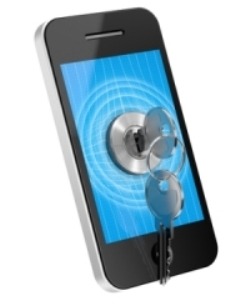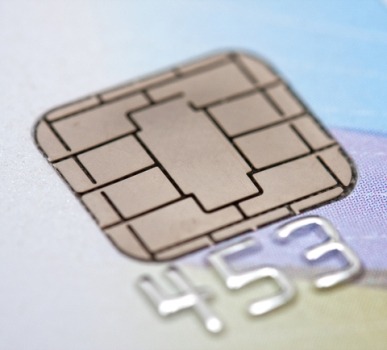Fear of Fraud trumps Terrorism
Okay, what’s more likely? Getting bombed … or some punk racking up charges on your credit card?

The yearly Crime Poll says that two-thirds of the respondents were edgy about data breaches involving their credit cards, as well as their computer and smartphones getting hacked—far more so than being robbed or taken hostage.
It’s easier to thwart a mugger or burglar than it is to thwart cybercrime. Just because you never click links inside e-mail messages doesn’t mean a cybercriminal won’t still figure out a way to nab you.
Interestingly, many people who’ve been digitally victimized don’t even bother filing a police report, says the survey. But a much higher percentage of burglary and mugging victims will.
Maybe that’s because 1) They know it will be easier to catch the thug, and 2) It’s way more personal when a masked man jumps you on the street and hits you with a brick, versus some phantom from cyberspace whose body you never see, voice you never hear, hands you never feel—even though they drain your bank account dry.
But which would you rather have? An ER visit with a concussion and broken nose from the mugger, or a hacked credit card? The Fair Credit Billing Act allows you to dispute unauthorized charges on your card statement and get other things straightened out. And until you pay the whopping bill, your account isn’t robbed.But if someone hacks into your debit card, they can wipe out your checking account in a flash.
The good news is that often, cyberthieves test the waters of the stolen data by making initially small purchases…kind of like a would-be mugger feeling out a potential victim by initially asking her for the time or “accidentally” bumping into her.
A credit card can have varying levels of alerts that can notify the holder of suspicious activity. An example is a charge over $1,000 nets a text message to the holder about this. However, if you set a much lower threshold, you’ll know sooner that the data or card was stolen. Don’t wait till the thief makes a huge charge to be alerted. The lower that threshold, the sooner the card company will contact you and then initiate mitigation.
You know how to prepare for a mugger (pepper spray, self-defense lessons, etc.), but how do you protect your credit and debit cards?
- Check your credit card statements thoroughly.
- Don’t put off contacting the company over a suspicious charge.
- All of your devices should require a password to log on.
- Use encryption for all of your devices.
- Always use your bank’s ATM, never a public kiosk.
- Never let an employee take your card out of your sight.
7 Careful Commerce tips when Shopping this Holiday Season
Frosty the Hackman is teaming up this season with the Grinch to scam people out of their money. Shopping online is a godsend, but it brings with it a pristine opportunity to be ripped off.

- Avoid Phishing Scams. Never click on links inside e-mails even if they’re (allegedly!) from Macy’s, Kohl’s or some other big-name retailer. Scammers can easily make an e-mail appear legitimate. The e-mail inside the message may take you to a website that downloads a virus to your computer.
- Thwart Visual Hackers. Planning on doing some online shopping on your lunch break? Some hackers steal data by literally snooping over the shopper’s shoulder and if your credit card number, social security or other personal identifiable information happens to be on display on screen, you will be at risk. If you couple the 3M company’s ePrivacy Filter with their 3M Privacy Filter, “visual hackers” won’t be able to see from side angles, and you’ll be alerted to those peering over your shoulder and from most other angles.
- Do Your Research. If you want to buy from an unknown little retailer, hunt for reviews first. Be alert to phony reviews to make them look great; identical reviews across different sites are a bad sign. Check the Better Business Bureau’s rating for retailers you visit.
- Be Wary of Free Wi-Fi While it might be tempting to double check your bank account balance or get some emails done while you’re waiting in line for the register, if you’re accessing an unencrypted network you are putting yourself and your personal information at risk for data theft.
- Credit over Debit. If you get ripped off, the money is gone the second the card is used. At least with a credit card, you have some time to issue a dispute, and the card company will usually give you a full credit.
- Review Your Credit Regularly. Since you’ll be using your credit cards more frequently during the holidays, it’s important to stay on top of your statements to make sure there are no fraudulent charges.
- Mind your Passwords. To increase your security across the web, update your passwords during the holiday season in case one of your favorite retailers is hacked. Even if these sites are not infiltrated, right away consider changing your passwords across the board to better protect yourself down the road. And while it is annoying to remember different passwords, it’s important to very them for optimal protection.
Robert Siciliano is a Privacy Consultant to 3M discussing Identity Theft and Privacy on YouTube.
Protect your Data during Holiday Travel
You’re dreaming of a white Christmas, and hackers are dreaming of a green Christmas: your cash in their pockets. And hackers are everywhere, and are a particular threat to travelers.
- Prior to leaving for your holiday vacation, have an IT specialist install a disk encryption on your laptop if you plan on bringing it along; the hard drive will have encryption software to scramble your data if the device it lost or stolen.
- Try to make arrangements to prevent having to use your laptop to handle sensitive data. If you must, then at least store all the data in an encrypted memory stick or disk encryption as stated above. Leave as much personal data behind when you travel.
- Before embarking on your vacation, make sure that your devices are equipped with comprehensive security software such as antivirus, antispyware, antiphishing and a firewall so that you can have safe online connections.
- If your device has a virtual private network (VPN), this will encrypt all of your transmissions when you use public Wi-Fi. Hackers will see gibberish and thus won’t have any interest in you. Don’t ever connect to an unprotected Wi-Fi network!
- Always have your laptop and other devices with you, even if it’s to momentarily leave the hotel’s lobby (where you’re using your device) to get some water. When staying at friends or family, don’t leave your devices where even other guests in the house you’re staying at can get to them, even if they’re kids. Just sayin’.
- Add another layer of protection from “visual hackers,” too. Visual hackers peer over the user’s shoulder to see what’s on their screen. If they do this enough to enough people, sooner or later they’ll catch someone with their data up on the screen.
- Visual hackers can also use cameras and binoculars to capture what’s on your screen. All these thieves need to do is just hang nearby nonchalantly with your computer screen in full view, and wait till you enter your data. They can then snap a picture of the view.
This can be deterred with 3M’s ePrivacy Filter, when combined with their 3M Privacy Filter. When a visual hacker tries to see what’s on your screen it provides up to 180 degree comprehensive privacy protection. Filters provide protection by blackening the screen when viewed from the side. Furthermore, you’ll get an alert that someone is creeping up too close to you. The one place where a visual hacker can really get an “in” on your online activities is on an airplane. Do you realize how easy it would be for someone sitting behind you (especially if you both have aisle seats) to see what you’re doing?
Should You Use Near-Field Communications?
Have you ever wondered what kind of superpower you’d have? I’ve always wanted to send messages and ideas with my mind to others. My dream can sort of come true with near-field communications (NFC).

You’ve might not have heard of NFC, but if you have a smartphone, there’s a good chance you’ve used it. If you have ever used Apple Pay or bumped your Galaxy smartphone with your buddy’s to send pictures, you have used NFC. By definition, NFC allows smartphones and similar devices to establish radio communication with each other by bringing them close together, usually no more than a few inches or centimeters. It’s an exciting technology that has a lot of promise, but there are a few concerns too. Let’s take a closer look at the pros and cons of NFC.
Pros
- Convenient. In a busy digital world, people like transactions that are quick and easy. That is one of NFC’s greatest strengths. No more digging around a wallet or purse for a debit or credit card, all you need is your phone. The technology is intuitive—bring your phone close to the reader and a simple touch and bam! Transaction completed. Think about how much time that would save at coffee shops, grocery stores, etc.
- Versatile. NFC can be used for many situations and in many different industries. In the future, NFC technology could allow you to use your phone to unlock your car, access public transportation, or launch applications depending on where you are (bedside table, work desk, etc.).
- Safe. If your wallet is stolen, thieves immediately have access to your information. With a smartphone, your data can be protected by a password and/or PIN. But the biggest strength is that with NFC payment, retailers no longer have access to your credit card information.
Cons
- Security. Although NFC technology is more secure than magnetic strip credit cards, there are still security concerns. As people use this technology to purchase items or access cars, there is more incentive for hackers to break into smartphones to steal financial and personal information.
- Usability. NFC will only succeed if merchants and companies adopt it as the way of the mobile commerce future. Although the technology is consumer-friendly, it is expensive to purchase and install related equipment. And it still may take years before there are enough smartphone users for NFC to add enough value to merchants to implement.
NFC is a new and blossoming technology with lots of potential. Whether you decide to use it or not, there are always things you can do to keep your personal and financial information safe. For tips and ideas, check out Intel Security’s Facebook page and Twitter feed.
Mobile Carriers spying on Users
How does my mobile phone know I like tools, electronic gadgets and tarantulas? It keeps showing me ads for these products! Christmas is coming and my kids like bugs, big bugs.

How does it know? It’s called “supercookies”. And they aren’t yummy.
If Verizon is your carrier, that’s why. Verizon uses a “unique identifier token header” for every website the user visits. There are cookies that tag along with the user wherever they go in cyberspace. Advertisers gorge on these cookies because they tell them what products to advertise for each unique person.
You can opt out of Verizon’s program, but this won’t prevent the UIDH (this a Unique Identifier Header) from being stamped on any site you visit and then be visible to a web server.
Even Android’s and iOS’s systems can’t supersede the UIDH system. The UIDH HTTP header is not the same as a typical Internet cookie. This is a lot to digest, it is what it is.
At present, there is no opt-out technology to truly eradicate what some consider spying, and it won’t be around soon, either. And look for AT&T to think possibilities by adopting this UIDH system to track their subscribers’ web journeys.
Though there’s no opt-out-like feature to stop this, there is a way to block it: VPN (virtual private network). Some smartphones have a VPN mode; once activated it will make the user anonymous. I like Hotspot Shield (HSS), which works on Androids and iPhones, easy. And don’t twiddle your thumbs waiting for universal encryption; your toddler will be entering college by then.
If targeted ads (hey, maybe you just love those handbag adverts) don’t phase you, then consider this: Cyber thieves can get ahold of all the sensitive information you have in your phone and learn all sorts of things about you, including any sordid details. Or maybe they just want to steal your identity to drain your bank account. Everyone is being watched by everybody.
Should you worry? That all depends. The Electronic Frontier Foundation is worried. They no likey.
This is where the VPN comes in, especially if you use public Wi-Fi, which is not encrypted. HSS, which is free, will protect your data. There’s also an upgraded version that you pay for; it’s faster. Either version will guard your Internet activities from prying eyes.
Robert Siciliano is an Identity Theft Expert to Hotspot Shield. He is the author of 99 Things You Wish You Knew Before Your Identity Was Stolen See him discussing internet and wireless security on Good Morning America.
Social Media Identity Theft leads to Arrest
Are you one who believes you’re too smart, too savvy, to get your identity stolen in the social media world? Nobody thinks this will happen to them, and Stephanie Francis, 24, was no exception to that way of thinking.

A report from firstcoastnews.com that the Jacksonville, Florida woman claims her identity was stolen—on social media of all places—and that the thief used it to create a phony Facebook account. This is interesting because there’s probably a ton of Facebook accounts under the name of “Stephanie Francis.” But there’s more to a fake Facebook account than using a name that a lot of other users have.
Francis says she’s being charged with a crime and wants to know how she can protect herself. As just mentioned, there’s more to this than just a duplicate of a common name. Francis explains in the article, “Someone created a Facebook with my name and picture on it and has been stalking my ex-boyfriend."
This is just too easy to do: Find an online picture of the person, for instance, who bullied you in high school (it could be from an article announcing their promotion at a company, who knows?), then sign up on Facebook using that person’s name and photo for the profile page. How easy is that? And if you do anything illegal like stalk the bully’s ex-wife, the authorities will blame the bully! Social media is a magnet for cybercrime.
Francis has been charged with cyber stalking. She’s contacted Facebook and law enforcement, and the case has now gone to court. How did the imposter learn of her ex-boyfriend? Is this detail of Francis’s life in her social media posts? Maybe the imposter is a coworker and overheard her tell someone about the ex-boyfriend.
This case not only teaches the lesson of be careful what you post online, but also whom you share in person the details of your life—how loudly you talk, and who might be nearby to overhear.
Francis has created a Facebook account under a different name and faces another trip to court to try to resolve the situation.
Perhaps this mess could have been prevented:
- Create a super strong password that would take a hacker’s machine two million years to crack.
- Think! Think! Think before you post on social media!
- Make your FB account as private as possible.
- Seel out your likeness on social and the moment you discover an imposter, report it.
Robert Siciliano is an identity theft expert to BestIDTheftCompanys.com discussing identity theft prevention. For Roberts FREE ebook text- SECURE Your@emailaddress -to 411247.
Card Company's boosting Payment Security with Mobile
Whoever thought that one day, paying with green paper would be viewed as primitive as a horse and buggy? We seem to be getting closer to that time, especially since the security of making payments via smartphone is always being improved.

One way is with fingerprint scanning. Some smartphones already have this biometric feature. But what about credit cards and biometrics? Visa is currently experimenting with biometrics, but nothing yet has been deployed to the public. Nevertheless, a credit card company trying to develop something with biometrics will likely need to get involved in the smartphone arena.
There will always be the consumers who want to stick to the old-fashioned method of using cash, just like there are always those strange people who insist on buying the kind of stamps that you must lick (or wet with tissue paper) rather than the self-stick ones. But hopefully, credit card companies will cater to both kinds of people amking the new technology stupid simple.
If the credit card companies come out with biometrics tied into the mobile device, it will likely be a fingerprint scanner vs. face or voice recognition, but the fingerprint password will be sufficient security after long term testing.
New technology is never carved in stone, but let’s at least get it out there and see how it works. Let’s see how new technology like biometrics in a mobile (like Apple pay) can combat credit card fraud.
In the meantime, card companies and consumers (and banks) must continue to wrestle with the rampant crimes involving credit cards. Recently, MasterCard teamed with Syniverse, a mobile technology company, with the goal of stifling fraudulent use of credit cards.
MasterCard’s approach relies upon the smartphone geolocator. The company’s plan enables the card to be used only if it’s within a certain range of the owner’s smartphone. Though at first, this sounds fool-proof, it has a flaw: What if the thief is within that range? Obviously, if the card is swiped a thousand miles away from the holder’s mobile device, the thief will fail. This new technology hinges upon the thief being outside that range.
A perk of this new technology is that it eliminates the hassle of the holder having to notify the company that they’re traveling so that transactions won’t be declined—because the transaction will occur near the holder’s smartphone—unless a thief makes off with the smartphone and just happens to get out of range.
Chip and PIN, will It save Us?
Many Americans, says a recent survey by Gallup, worry about a data breach connected to the use of their credit cards. Interestingly, many people use a credit card for everything under the sun: even just a soda and bag of chips from the convenience mart. The more you use a credit card, the more likely it will be compromised by cyber thieves.

The magnetic stripe technology for credit cards makes them so “hackable.” One way to help prevent credit card crimes is to implement a chip-and-PIN technology. It’s been touted as a sure way to keep crime at bay. But is it what it’s cracked up to be? After all, how could the thief, holding your credit card, know your PIN?
The magnetic stripe contains account information. This can easily be copied with a thief’s tools such as a skimming device. A chip card uses a microprocessor that’s embedded. This makes the account information non-accessible to a hacker during any point of a sales transaction.
There are additional features to chip technology that tie into keeping fraud away:
- Every time the card is used is recorded.
- A cryptogram lets banks view the data flow.
Chip technology will be coming out in 2015 for the States, and experts are very confident that this transition will choke a lot of life out of card fraudsters. The transition will cost around $8 billion—if done correctly. And this “roll-out phase” won’t happen overnight, either.
There has been credit card fraud involving chip technology. Here’s how it happened: The crooks stole account information from magnetic stripes via skimming. The transactions were then done EMV style, then the criminals picked up traffic from an authentic EMV chip transaction. Next, the thieves put the information they’d skimmed into the transaction, and pulled off their crime.
In short, chip-and-pin technology is not without the element of human error; EMV can still be implemented poorly. As for that human error, this happened not too long ago with Canadian banks. They were struck with a big financial loss because the counter data and cryptograms were not being checked efficiently.
We can have a really great thing here—if it’s implemented in a smart way. What good is an advancement in technology if it’s carelessly employed?















